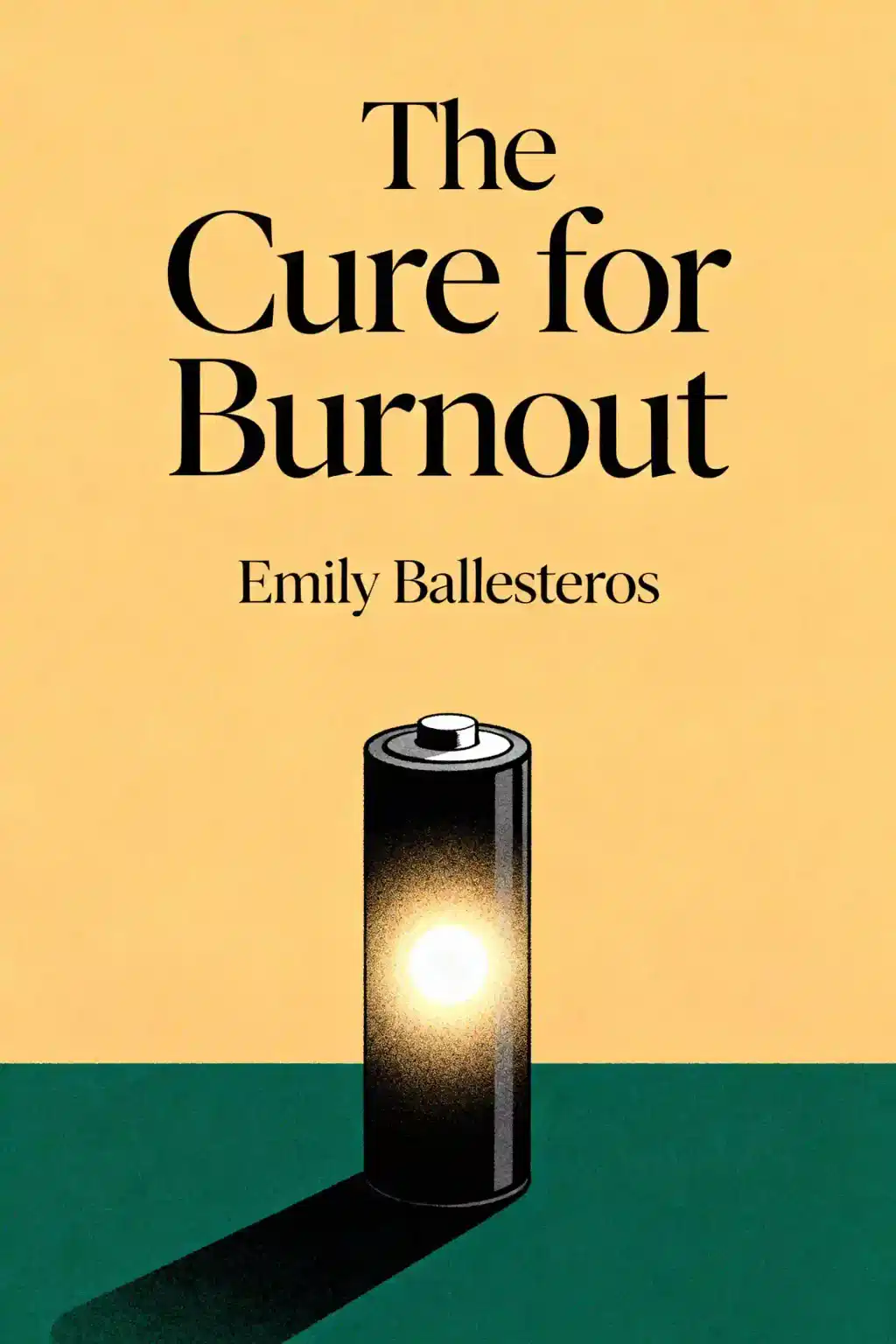What is
The Cure for Burnout by Emily Ballesteros about?
The Cure for Burnout offers a science-backed, five-pillar framework to combat modern burnout by addressing mindset, personal care, time management, boundaries, and stress management. Drawing from industrial-organizational psychology, Emily Ballesteros provides actionable strategies to break burnout cycles, restore work-life balance, and reclaim energy. The book blends research with real-world examples, emphasizing habit-building and systemic changes for professionals in high-stress environments.
Who should read
The Cure for Burnout?
This book is ideal for corporate professionals, working parents, entrepreneurs, and anyone feeling chronically overextended. Ballesteros’s tools are especially relevant for office workers, remote employees, and those in caregiving roles. Readers seeking structured, step-by-step methods to balance productivity with self-care will find actionable solutions tailored to modern work culture.
Is
The Cure for Burnout worth reading?
Yes—readers praise its practical, no-fluff advice and relatable tone. Ballesteros distills complex psychology into digestible steps, making it accessible for burnout newcomers and seasoned sufferers alike. Early reviews highlight its humor, clear frameworks, and effectiveness in breaking cyclical stress patterns. However, those in non-office roles may find some examples less applicable.
What are the five pillars of burnout management in
The Cure for Burnout?
Ballesteros’s methodology focuses on:
- Mindset shifts (reframing obligations)
- Personal care rituals (sleep, nutrition, movement)
- Time-blocking strategies (priority-based scheduling)
- Boundary enforcement (saying “no” tactfully)
- Stress inoculation (micro-habits for resilience).
These pillars work synergistically to prevent and reverse burnout.
How does
The Cure for Burnout differ from other self-help books?
Unlike vague wellness guides, Ballesteros targets actionable corporate-environment fixes, like email boundaries and meeting efficiency. The book uniquely combines organizational psychology with TikTok-tested tips, avoiding abstract theory. It also addresses post-pandemic work challenges, such as remote/hybrid burnout, making it timely for 2025 readers.
What are key quotes from
The Cure for Burnout?
Notable lines include:
- “Burnout isn’t a personal failure—it’s a systems failure.”
- “Your ‘yes’ today shouldn’t bankrupt your tomorrow.”
- “Stress becomes burnout when recovery stops being a priority.”
These emphasize systemic change over individual blame.
Does
The Cure for Burnout address workplace-specific burnout?
Yes. Ballesteros dedicates chapters to toxic workplace dynamics, unrealistic deadlines, and “always-on” email culture. She provides scripts for negotiating workloads and redefining productivity metrics. Corporate case studies from PepsiCo and Salesforce illustrate scalable solutions for teams and leaders.
What criticism has
The Cure for Burnout received?
Some reviewers note the office-centric examples limit applicability for gig workers or creatives. Others desire deeper exploration of systemic issues like healthcare access. However, most agree the core principles (boundaries, stress management) are broadly adaptable.
How can
The Cure for Burnout help with work-life balance?
The book teaches “time ownership” strategies, like calendar audits and task triage. Ballesteros challenges the myth of multitasking, advocating for focused “energy buckets.” Readers learn to identify “balance saboteurs” (e.g., over-optimism) and implement non-negotiable recovery routines.
What actionable steps does
The Cure for Burnout recommend?
Key steps include:
- Conducting a burnout audit (tracking stress triggers)
- Implementing micro-boundaries (e.g., email cutoff times)
- Building a “recovery menu” (quick stress resets)
- Practicing habit stacking (linking new routines to existing ones).
Why is
The Cure for Burnout relevant in 2025?
With remote work and AI-driven productivity demands intensifying, Ballesteros’s focus on digital detoxing and intentional disconnection resonates. Updated examples address Gen Z workplace trends, like asynchronous communication and results-only work environments (ROWE).
How does Emily Ballesteros’s background influence
The Cure for Burnout?
Her corporate training experience at firms like Thermo Fisher informs the pragmatic, employer-friendly tactics. The industrial-organizational psychology lens ensures strategies align with workplace realities rather than idealized self-care scenarios. This bridges the gap between employee well-being and business outcomes.








